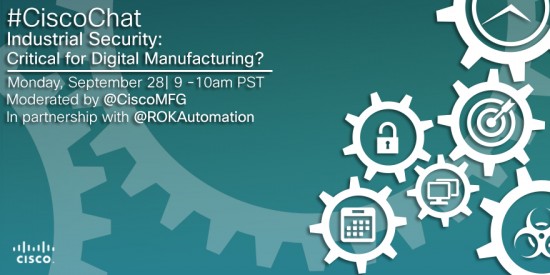
































Manufacturing is undergoing radical advancements, much like the ones we've seen in healthcare and education, thanks to the Internet of Everything (IoE) and all of the people, data, processes and things it connects.
By 2020, it's estimated that there will be 50 billion devices and objects connected to the Internet, including many of the devices in the manufacturing world. "Smart" factories where machines "talk" to one another, fleet vehicles such as trucks and forklifts with sensors that monitor their movements, and even wireless inventory tracking devices are all in play at manufacturers across the globe. Manufacturers are embracing a new generation of Machine-to-Machine (M2M) and Person-To-Machine (P2M) systems, as well as mobile applications and cloud-based services that drive efficiency and innovation across their value chain.
All of these connected "things" and processes allow manufacturers toreap benefits and address challenges that more traditional models and operating practices were not able to do. This is especially true as IT and OT operations become more integrated and vast data streams are acquired, processed and transmitted. But it's these very streams of data and inter-connectedness that are putting the industry at risk.
During our upcoming#CiscoChatonSeptember 28 at 9:00 a.m. PST, members of the @CiscoMFG team will be joined by strategic alliance partner Rockwell Automation (@ROKAutomation) for what promises to be an eye-opening discussion on what new digital business models mean for industrial security. Rockwell Automation is an industry leader focused on industrial automation. Through our unique alliance, we combine Rockwell Automation's leadership in automation with Cisco's networking expertise to deliver best-in-class industrial solutions.
Why is industrial security such a critical discussion? In 2012, McAfee's Threat Predictions white paper identified industrial networks as the leading cyber security vulnerability, identifying Industrial Control and Automation Systems (IACS) as target rich environments. Just two years ago, Symantec reported that manufacturing was the most targeted sector for targeted attacks, accounting for 24 percent of them. Fast forward to 2015 and the news is not much better. Cybercrime costs have risen to$445 billion annually; the interconnectivity of devices and the new business models they drive are a huge reason.
Within manufacturing, hackers have the ability to take control of certain software platforms and infect systems with malware. If there are unpatched or unprotected areas on IACS systems, hackers can easily gain access to them -just like on traditional enterprise networks. And the consequences could be detrimental, both internally and externally; worker downtime, economic losses, regulatory requirement violations are just a few.
During this#CiscoChat, I will be joined by Nancy Cam-Winget, one of our leading experts in industrial security and Cisco Distinguished Engineer, along with Gregory Wilcox, Global Business Development Manager at @ROKautomation and other participants to discuss how to mitigate digital risks and the future of security within the manufacturing industry. Join us to participate and follow the discussion onSeptember 28 at 9:00 a.m. PST, using hashtag#CiscoChat.
 Tags quentes :
Internet of Everything (IOE)
Redes Sociais
IoE
Fabricação
#CiscoChat
Business Trends
Tags quentes :
Internet of Everything (IOE)
Redes Sociais
IoE
Fabricação
#CiscoChat
Business Trends